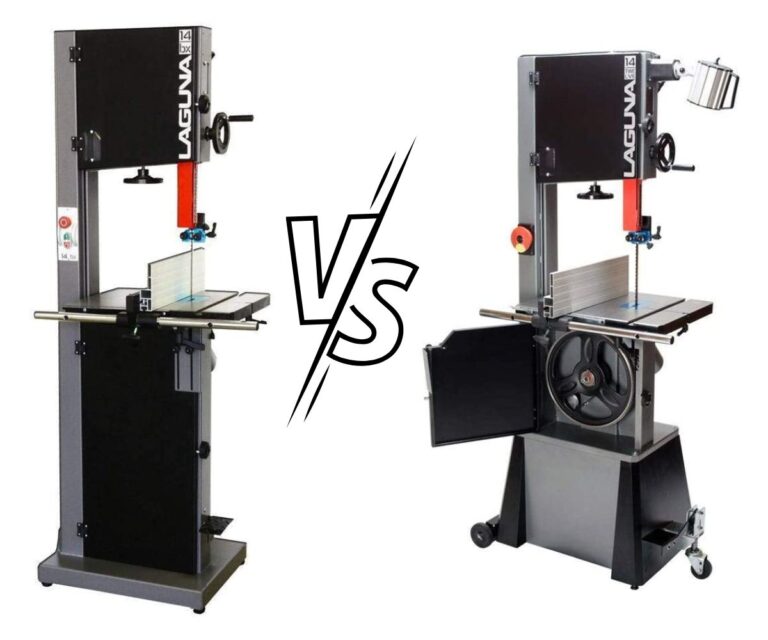What size drill bit for ½ inch tap?- Know How to Calculate!
As an Amazon Associate I earn from qualifying purchases.
Drill bits make holes in the workpiece, and the tap is used to create a thread mark on the hole that matches your blot or nut to ensure precise and secure threading. If you take a drill bit that size is much larger or smaller, then the taping will not be accurate, and the bolt or nut will not fit.
Here, for ½ inch 20-inch cutting tap, you need a 29/64” Drill bit, and for ½ inch 13-inch forming tap, you need a 29/64” Drill bit.
In this article, I will show you What size drill bit for ½ inch tap, what are the benefits of different pitch threads for drill size, and how you can calculate the drill bit size.
Contents
Table for ½ tap and drill bits size.
| Tap size and pitch | Cutting taps | Forming taps |
| Drill bit size | Drill bit size | |
| ½” – 13 | 27/64” | 29/64” |
| ½” – 20 | 29/64” | 15/32” |
| ½” – 28 | 15/32” | 15/32” |
What size drill bit for ½ inch tap?
For ½ inch tap, Drill bit size basically varies on the tread and pitch number. You will get basically 13, 20 and 28 number of thread per inch on the ½ inch tap. The more thread per inch you get, the more the drill bit number will be changed.
For ½ inch cutting tap and 13-inch thread per inch, you need a 27/64-inch size drill bit. For 20-inch thread per inch, you need a 29/64-inch size drill bit; for 28-inch thread per inch, you need a 15/32-inch drill bit.
But if you want to use a form tap, this equation will be different, and so will the number of drill bits. For 13-inch, you need 29/64-inch; for 20-inch, you need 15/32-inch; and for 28-inch, you need 15/32-inch drill bit.
Recommended Drill Bit Size for 1/2 Tap
For ½ inch tap cutting, a 20-pitch thread tap is more suitable, I found; accordingly, the drill bit size for this category is 29/64 inch. It will easily create holes in the soft as well as in the hard materials and thin and thick materials.
TAP, Thread and Drill Bit!
The question may come to your mind: Why the drill bit sizes are different for the same size of tap, and what are the advantages you get on different amounts on thread? Let me clear to you.
Drill bit size differs from making slightly bigger and smaller holes and the same size hole with the tap. Then what about the 13 TPI? Why is it important to look at? Basically, the tap thread has to match the bolt thread to ensure precise and secure threading. Like, if you have a 13TPI bolt, then you need a 13TPI tap.
½ inch -13
½ inch diameter with 13 TPI means the thread type will be a coarse thread. It will have 13 threads per inch. To fit a screw 27/64-inch drill bit is required. This will cut a little smaller hole than the tap, and use a deburring tool to lager the hole mouth size; then, use the tap, it will fix exactly, not too loose or not too tight.
Another thing is that tap creates a thread mark, which means fracture. If you use a 13TPI tap on a thin wood, this may crack the hole and won’t get the accurate result.
½ inch -20
½ inch diameter with 20 TPI means the thread type will be a fine thread. It will have 20 threads per inch. To fit a screw 29/64-inch drill bit is required. This will create the same size hole as the tap size, and you can easily tap on that hole and screw your bolt or nut.
Here, for 20 TPI, you can use this thread on both a thin and a thick workpiece. It will give good grief for both kinds of materials.
½ inch -28
½ inch diameter with 13 TPI means the thread type will be a coarse thread. It will have 28 threads per inch. To fit a screw 15/32-inch drill bit is required. This will cut a slightly larger diameter hole than the tap but won’t create a loose hole while using a tap. Here, for 28 TPI, you can use this thread on a thin workpiece because it has more thread.
Differences between cutting taps and forming taps
Cutting taps vs forming taps; it’s a most asked question to know for creating a perfect hole to screw your boult or nut tightly.
Cuttings taps are a simple form of taps as the drill bit will cut the workpiece and will make a hole for the screw. On the other hand, the forming tap is the compressed process, it will not cut but rather will compress the workpiece and make space for the screw.
As forming a tap made a space for the screw inside the workplace it displaces the materials which may try to fix in the previous state. So, on this basis, while tapping ½ inch the drill bit must be a little thicker than cutting one.
As I tried both, for me ½ inch tap making is easy through cutting taps. Cutting taps is faster than forming. It asks for less pressure while forming a tap prefers more. Also, if the material that you are working on is a stability lover, then making an appropriate hole is hard.
How to calculate drill bit size for tap
If you are a DIY worker, you may need different drill bit sizes for different tap sizes. While calculating this you might face difficulties or depend on others to calculate. Here I am giving you an equation that will help you to calculate easily at any time.
Table of Equation
| Type of tapping | Inch Threads | Metrics Threads |
| Cutting Taps | D- {(Hp ) /(76.98×TPI)} | D- {(Hp ×P)/ (76.98)} |
| Forming Taps | D- {(Hp ×P)/ (294.12)} | D- {(Hp ) /(294.12×TPI)} |
Here, D is Nominal thread diameter, H is Thread depth, Hmax is maximum thread depth, Hp is Thread depth in percentage, P is Pitch, and TPI stands for tooth per inch.
Here, I am showing you an example of calculating the ½ inch -20 Thread
D= 0.50
TRI= 20 Tooth per inch
Hp = 80 percent [ Default Thread Depth is 75 percent. You can choose between 65 to 80 percent]
TD= (0.50 – ( 80/ (76.98×20)) = 0.45
Frequently Asked Questions
Do you drill a hole the same size as the tap?
Yes, I drill a hole almost the same size as the tap. If you drill a hole larger, the tap will enter the hole easily and won’t make the thread mark, which means the bolt won’t make a tight grip. If you hole much smaller, the tap won’t enter the hole to make the thread mark so that the bolt won’t enter. For that, the same size hole is important as the tap.
How To pick the right drill bit size for my screw
By doing multiple steps, you can pick the right drill bit size for your screw. Firstly, you can use a pitch gauge, with this first major the screw pitch thread and then major the tap pitch thread. Another thing you can do is directly major the pitch tread, keeping the tap and screw on to the other and match the pitch thread on another.
In both processes, after matching the pitch tread and getting the tap size, check the chart and look at the drill bit size preferred for that tap, or you can calculate on your own only by applying a simple formula.
What tools do you use to drive a tap?
Depending on the situation or accessibility, I use different tools to drive a tap. For hand tapping you can use T-handle wrenches and bar wrenches and for machine tapping, you can use a radial drilling machine and pillar-type drill machine.
Conclusion
Picking the right drill bit size for ½ inch tap or the tap you have is important to have accurate results. The drill size depends on the working materials as well as on the cutting tap and forming tap’s pitch and thread.
I have elaborately described all those with advantages and selection methods and calculations. Now you can easily identify or select the perfect drill bit size for your different numbers of taps. Thank you.






